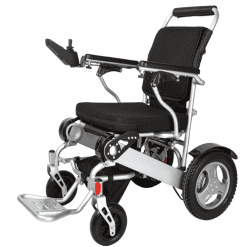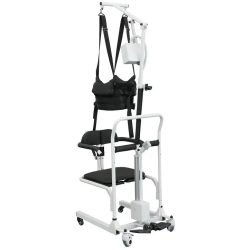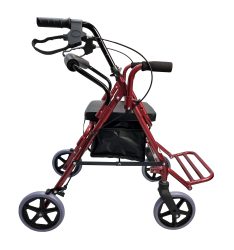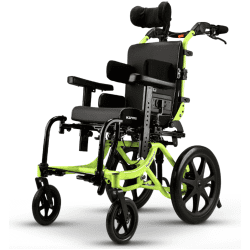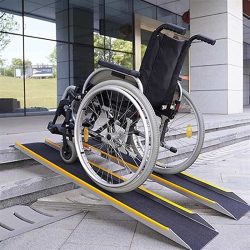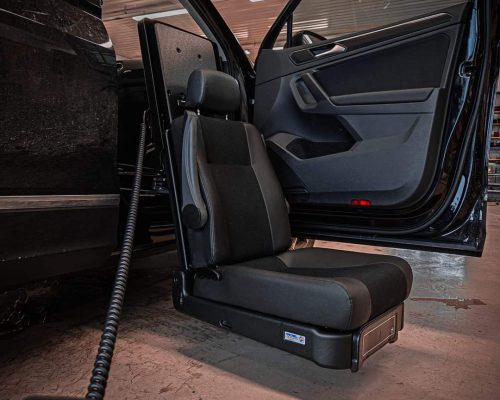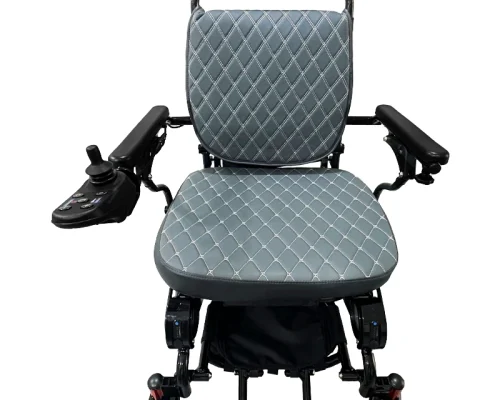Table of Contents
TogglePeople of determination who rely on wheelchairs face challenges daily. Different disabilities require wheelchair use. In this blog post, we’ll go through a wheelchair disabilities list to have further understanding about the diverse disabilities that wheelchair users have.
Mobility Impairments
People with mobility issues face difficulties in moving and coordinating their limbs. Wheelchairs become an indispensable tool for them to help with their mobility.
1. Spinal cord injuries
People with injuries to their spinal cords often because of trauma or disease result in paralysis. As such, they need a wheelchair for mobility.
2. Muscular Dystrophy
Muscular dystrophy causes progressive muscle weakness. People afflicted with this disorder can lead to needing a wheelchair as the condition advances.
3. Arthritis
Severe arthritis especially in the lower extremities can also limit mobility and make the use of a wheelchair necessary.
4. Stroke
Depending on the severity of a stroke, people may experience mobility impairments that require the use of a wheelchair.
5. Neurological disorders
These conditions affect the nervous system leading to muscle weakness, tremors and difficulty in walking. Wheelchairs become a means to overcome these mobility limitations.

6. Multiple sclerosis
MS or multiple sclerosis is an autoimmune disease that targets the central nervous system. People suffering from this disease often have difficulties with walking and balance and end up relying on a wheelchair.
7. Amyotrophic lateral sclerosis (ALS)
A neurodegenerative illness that affects nerve cells in the brain and spinal cord, ALS progresses over time. It can also result in significant mobility challenges.
8. Parkinson’s disease
Parkinson’s disease is the same with ALS. People with Parkinson’s disease often have symptoms such as tremors, stiffness, slowness of movement, and balance and coordination issues. Depending on the severity, they often need a wheelchair for mobility.
9. Cerebral Palsy
Cerebral palsy can also result in mobility impairments since this disorder affects movement and muscle coordination.
Societal challenges
Living with a disability that requires purchasing or availing of electric wheelchair rental services, comes with not only physical and mobility limitations but also societal challenges. Many environments and public spaces are not designed with wheelchair accessibility in mind. These physical barriers lead to disabled people feeling excluded and not able to fully engage with society.
Supporting inclusivity
Fortunately, there are mobility experts like Gilani Mobility that not only come up with innovative mobility aids such as a lightweight wheelchair but also participate in initiatives for more inclusive and accessible communities.
A more inclusive and supportive society for individuals with wheelchair-accessible disabilities requires a collective effort from mobility specialists, policymakers and thought leaders.

FAQs
What is the most common wheelchair disability?
There are numerous disabilities that warrant the use of a wheelchair and it’s difficult to determine which disability is the most common. However, the most prevalent wheelchair disabilities are mobility impairments, arthritis and other joint disorders, spinal cord injuries, stroke, autoimmune diseases that affect the central nervous system and neurological disorders.
What disabilities can put you in a wheelchair?
Several disabilities and medical conditions can lead to mobility impairments. But the decision to use a wheelchair depends on the severity and progression of the disability and the individual’s preference.
What diagnosis qualifies for a wheelchair?
Qualifying for a wheelchair is generally determined by a healthcare professional, often after a thorough assessment of the patient’s physical condition and mobility limitations. While there isn’t a specific list of diagnoses that would automatically warrant the use of a wheelchair, certain conditions or diseases that affect the muscles and the central nervous system may lead to a recommendation for wheelchair use.
What is a Type 5 wheelchair?
Wheelchair models of Type 5 are non-folding and equipped with swing-away footrests, fast release axles for effortless maintenance and transportation, anti-tippers, and detachable arms with adjustable height. These wheelchairs offer a great degree of customization for people with extremely restricted mobility.
Which patients use wheelchairs?
Wheelchairs are mobility aids used by individuals with various medical conditions, disabilities, or injuries that affect their ability to walk or move independently.
What are the 3 most common physical disabilities?
The three most common physical disabilities that use wheelchairs are arthritis and other musculoskeletal conditions, cerebral palsy and spinal injuries and spinal conditions.

